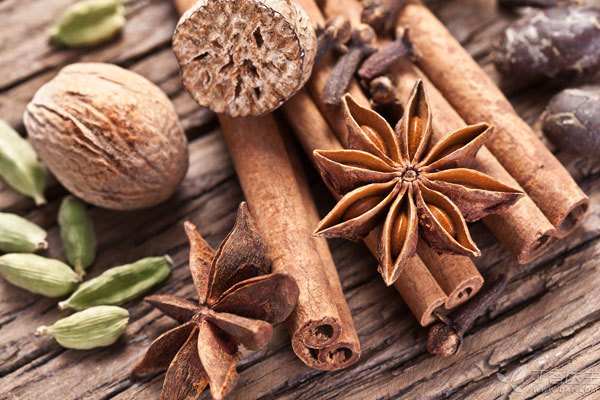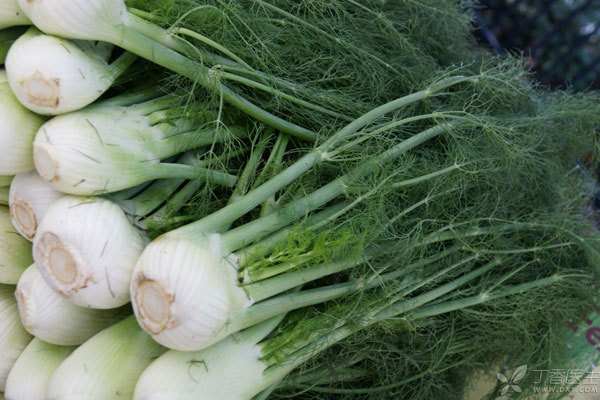
Did your circle of friends be swept by [Monkey King] on New Year’s Day?
< < Journey to the West > > Everyone read the sentence in the 39th chapter [Heart Ape is lying on various edges, splitting through the side door to see the bright moon] [Stephania tetrandra is like bamboo juice, fennel will worship the court when? ], wonderful use of [fennel] and [home] homophonic, to obtain the scriptures unswervingly and eventually return to their homeland’s pure heart to express incisively and vividly.
But wait a minute, but are you really sure that [fennel] in everyone’s eyes is a kind of [fennel]?
Illicium verum is indispensable in the taste of the year.
Kong Yiji said: “After reading a book… I will take an examination of you. How do you write the word anise in anise beans? Although this anise bean is worthless, Lu Xun said [you can buy a plate for a penny], it is a special product of Shaoxing. Beans are ordinary broad beans, but they taste fragrant and full of saliva. The key secret lies in this anise.
In the eyes of southerners, fennel is actually star anise, or big material, which is the fruit of star anise tree. This tree grows in the warm and wet valleys of subtropics. The fruit has neat petals and horns, usually 8 horns. The petals are pure and thick, with straight sharp horns and upward curved pedicles. It tastes sweet and has strong and special aroma. Boiled fish stew, pickled chicken and pickled duck are added with star anise to make the taste mellow and unique.

The edible and medicinal use of star anise has penetrated into all aspects of southerners’ life and seems to have been handed down from our ancestors. However, Su Song in the Northern Song Dynasty called it “Bo Fennel”. The word “Bo” revealed that star anise’s hometown was not actually China.
According to “Essentials of Materia Medica” written by Liu Wentai and others in the Ming Dynasty, star anise originated in Zhan Cheng State, that is, the central region of Vietnam. No later than the Song Dynasty, star anise landed in Guangzhou with the ship and quickly became a specialty of Guangdong and Guangxi, thus Wuzhou in Guangxi became a famous star anise hometown in the world.
Although the hometown of Illicium verum is not China, the history of local cultivation for more than 1,000 years has already made Illicium verum a genuine Chinese plant, and the output of Illicium verum in China has reached more than 90% of the world’s output.
When I was studying in Beijing, it took me only two hours to fly to my hometown in Jiangsu in winter vacation. I haven’t recovered from the plane yet, but as long as I ate a mouthful of my mother’s star anise boiled vegetarian chicken at noon, I realized that I was home and the year was approaching.
Do you have the fennel dumplings during the reunion?
Speaking of studying in Beijing, I have to raise thumb to the [dark cuisine] in the canteen. Have you ever eaten chocolate sauce cream eggplant? What about fried chili on moon cakes? How about corn and grapes? And, of course, fennel dumplings.
Southern students wait a minute, this fennel stuffing dumpling is the favorite of northern students, how also became dark cuisine! Just now I still miss fennel boiled vegetarian chicken. Why can’t I eat fennel dumplings?
< < Yan Zi Chun Qiu Nei Pian Za Xia > > There is a passage like this, saying that [orange is orange when it was born in Huainan, orange when it was born in Huaibei, and orange when it was born in Huaibei. The leaves are similar, but the taste is different. Why? Water and soil are different.] It seems appropriate to explain it here. However, this fennel is not another fennel. The fennel in the south is a tree, and Illicium is a species of Illicium. North fennel is a vegetable, fennel belongs to fennel species.

In the north, the tender leaves of fennel are washed and chopped, and then salt is added to mix with monosodium glutamate and sesame oil, which is an appetizing dish. Making dumplings with minced meat has become a necessary food during the Spring Festival because of the homophonic meaning of “returning home”. The fruit is dried and ground into flour, which is also the raw material of spiced powder and can be used as pasta seasoning.
Unlike star anise, which is a spice when it is introduced into China, fennel has undergone changes from vanilla to spice.
Although the common fennel in the north was found in China at least during the Three Kingdoms and the Two Jin Dynasties, it was still imported and its hometown was Persia.
< < Shi Shuo Xin Yu-Confused Drowning > > > tells such a story: Han Shou is handsome in appearance, Jia Chong chose him to be an official. Han Shouze fell in love with Jia Chong’s daughter in the long run. Later Jia Chong discovered that Han Shou had a strange fragrance. However, this kind of incense is a tribute from foreign countries. Emperor Wu only gave it to himself and Chen Chun, so he guessed his daughter’s affair with Han Shou. Whether it is, Jia’s daughter married Han’s family. The foreign herb here is Huai Xiang, and the word “Huai Xiang” has become a code of private admiration for men and women in the future.
Tao Hongjing of the Southern and Northern Dynasties is indispensable to the change of fragrance into fennel and vanilla into spice. He said [boil bad meat, add a little, no odor. The smelly sauce is fragrant at the end of the day, so it is called fennel]. At this point, fennel was officially put on the table.
Warm Tip: The population in the north likes to put aside salt, and fennel is a famous vegetable with high sodium content. 100 g fennel contains 160 mg sodium, which is equivalent to 0.4 g salt.
Therefore, for people who are suitable for low-salt diet such as hypertension and diabetes, fennel is good and can be eaten moderately.
North and South Fennel, All Return to Hometown
Why can’t students in the south accept the smell of fennel, while students in the north are happy with dumplings stuffed with fennel? The answer is: Go back and ask your mother.
French food has a local vegetable, anise, It belongs to the Umbelliferae family with Foeniculum vulgare, A group of mothers ate anise-filled snacks two weeks before delivery. One group did not eat it. After the baby was born, the researchers gave them cotton swabs stained with anise smell. The results showed that the babies born of mothers who ate anise stuffed snacks accepted or even liked the anise taste, while the babies born of mothers who did not eat anise hated the anise taste.
From this perspective, it is fennel that helps us realize that the return home in the depth of taste buds can be traced back to the mother’s uterus, the earliest home of each of us.
